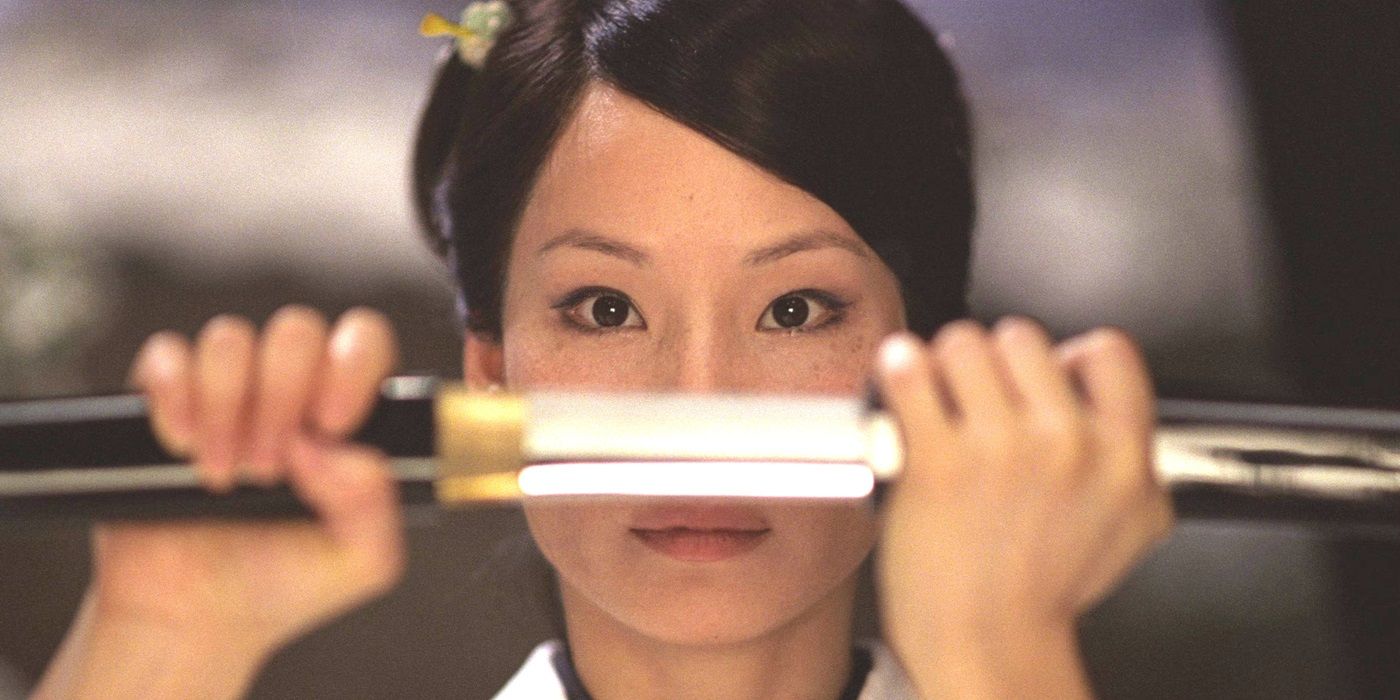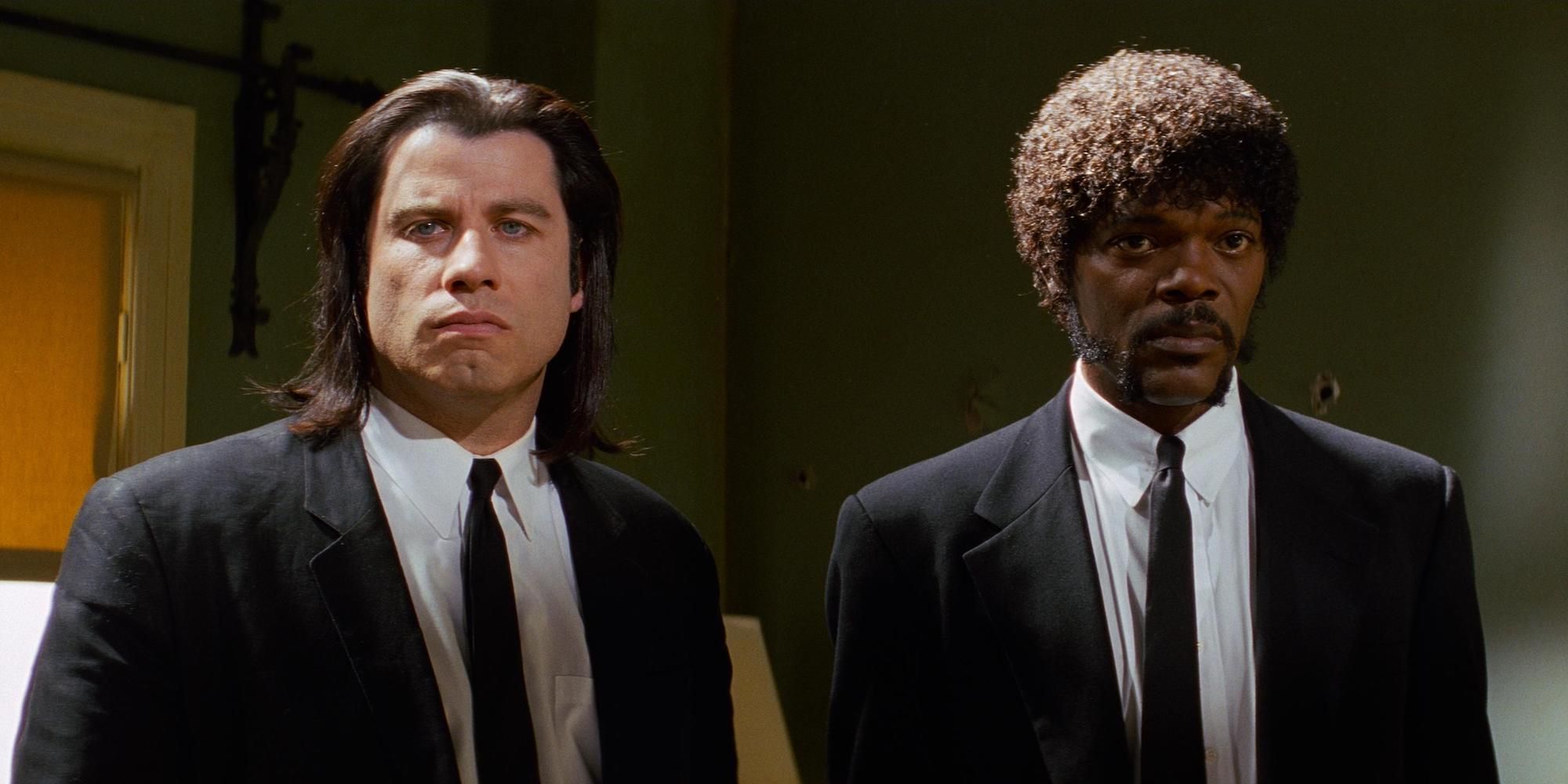As of about halfway through 2025, it’s still unclear what Quentin Tarantino’s 10th and apparently final film will be, but what is clear – and has always been clear – is that his nine others are pretty great. This is just referring to those he’s directed, too, since there are some other films that were only written by him. Well, From Dusk Till Dawn is one of them, and he also starred in that one. So his body of work does extend beyond his main nine, but you could also call them his main 10, because if you count one two-volume film as two movies (they were released separately), then he’s already reached 10. And that fabled final film will be #11. But if you think that, don’t tell Tarantino, because he considers that one film. And, for this ranking, it will also be considered one film.
As for that ranking, it’s pretty straightforward. It’s just an excuse to ramble about the best of the best as far as Tarantino’s directorial output goes, but it will be kind of exclusive. So, the likes of Reservoir Dogs, Once Upon a Time in Hollywood, and Django Unchained, though great, just miss out. It’s a tough world out there, and just as a bunch of Quentin Tarantino movies end with about two-thirds of the characters killed in some sort of violent way, so too have more than half his movies been dispatched. They were Marvin’d; they got shot in the face. Oh man. Anyway, on with the films.
4
‘Kill Bill’ (2003-2004)
Starring: Uma Thurman, David Carradine, Daryl Hannah
That previously hinted at two-volume film that is one film, according to Tarantino, is Kill Bill, of course. Kill Bill: Vol. 1 was released in 2003, and Kill Bill: Vol. 2 in 2004, and it’s still hard to find a way to watch the entire thing edited to be one movie, which is appropriately called Kill Bill: The Whole Bloody Affair. It’s listed as its own movie on Letterboxd, and has been screened before, but it’s not widely available for… reasons? It’s a little frustrating, but you do still get a pretty complete picture when watching Vol. 1 and Vol. 2 back-to-back, and since that’s what most people have to settle for, it makes Tarantino’s feelings about the whole thing being one movie feel a little harder to accept. But you do what you can with what you have. That’s what the protagonist of Kill Bill sure as hell does on a number of occasions. She gets out of a coffin that’s buried underground with nothing but a flashlight, a pocketknife, and her fists. But that’s getting ahead of things a little.
That sequence happens in Vol. 2, which is the comparatively slower half of the overall revenge epic that is Kill Bill: Vol. 2 is still extremely entertaining and well-written, but most of the extravagant action sequences can be found in Kill Bill: Vol. 1, which is a full-on homage to samurai movies, yakuza films, and martial arts flicks (plus there’s an anime segment). Vol. 2, on the other hand, is still a homage to martial arts movies, but not so much indebted to yakuza and samurai movies. Instead, it feels like Tarantino putting a novel spin on spaghetti Westerns a few years before he made a more explicit homage to them with Django Unchained. But you can’t go wrong with either half, and both undoubtedly should be watched, preferably as close together as possible to best replicate the feeling of them being one epic. The different approach taken for each one makes both volumes so distinctive, but they’re also in such harmony in a way that’s genuinely impressive on a writing/filmmaking front. Other Tarantino movies might be more narratively complex or unpredictable, sure, but Kill Bill might well represent the filmmaker at his most thrilling, bombastic, and stylish.
3
‘Jackie Brown’ (1997)
Starring: Pam Grier, Samuel L. Jackson, Robert De Niro
After Reservoir Dogs and another 1990s classic (its time will come, be patient), Quentin Tarantino made Jackie Brown, and it wasn’t entirely what everyone was expecting. There might have been some initial disappointment on account of that confusion, but in time, Jackie Brown has become more appreciated. And, to be fair, it’d feel wrong to suggest that everyone was blind to what it had to offer initially, as there will very likely big fans of this one way back in 1997. It’s a little slower and perhaps more plot-heavy than the previously mentioned Kill Bill, but also, the story of Jackie Brown doesn’t feel like it’s the most important thing. It’s good, but it’s not really what sticks with you or proves surprising. Instead, it’s the emotional core of this film that makes it special, and it also feels like the closest thing to a romance movie Tarantino will probably ever make. It’s also mature in that it feels like it’s about aging. Not getting super old, necessarily, but getting middle-aged at least, and the gentler nature of the film (it’s easily the director’s least violent) and kind of laid-back pace supports this feeling.
But at the same time, Jackie Brown is still a movie with a ton of life to it, and it manages to be entertaining alongside being surprisingly emotional. Also, not that any Tarantino movies are poorly acted (unless you’re talking about some of the director’s performances; his cameos aren’t always great), but Jackie Brown is particularly well-acted and cast, with the likes of Pam Grier, Samuel L. Jackson, and Robert Forster all giving career-best performances. It’s a crime/thriller movie with heart, and it unfolds at its own leisurely pace while still being utterly absorbing. It’s far from the only compelling movie out there based on the work of Elmore Leonard, but it is a contender for the best film based on an Elmore Leonard story. Also, it marks the only time to date that Tarantino has directed a screenplay he adapted rather than wrote originally, as Jackie Brown was based on Leonard’s Rum Punch.

2
‘Inglourious Basterds’ (2009)
Starring: Brad Pitt, Mélanie Laurent, Christoph Waltz
Maybe it’s hyperbole to call Inglourious Basterds one of the best war movies of all time, but whatever. Inglourious Basterds is one of the best war movies of all time. It was something very different for Tarantino in terms of genre, considering he’d pretty much just stuck to movies that could broadly be described as “crime films” before this point, albeit sometimes they were crime/action movies, like with Kill Bill: Vol. 1, and sometimes they were whatever the hell Death Proof was. Actually, no shade to Death Proof. Even if it’s Tarantino’s weakest film, it’s still a solid exploitation movie throwback, and has an all-time great car chase in it. But Inglourious Basterds could be called a return to form, since it was better than Death Proof and it felt like something adventurous. Tarantino has a character reference making a masterpiece right before the end credits roll, and if Inglourious Basterds was a lesser film, this would seem cocky and inaccurate. Instead, it merely feels cocky but kind of justified.
Tarantino might not have made any other war movies before or since, but Inglourious Basterds does still retain various stylistic touches that suggest it’s very much a Tarantino film, so it’s not entirely out of left field or anything. It’s a thrilling, extremely well-acted, and unpredictable film, and contains some of the best individual sequences Quentin Tarantino has ever helmed. Even better, all these sequences stack together to make something unforgettable, and it builds in quality throughout, starting off excellently and somehow just getting better and better. This all results in one of the fastest and best-paced 2.5-hour-long movies out there. Inglourious Basterds really does, in the best of ways, speed by in a flash.
1
‘Pulp Fiction’ (1994)
Starring: John Travolta, Samuel L. Jackson, Uma Thurman
Containing what’s probably the best screenplay for a Quentin Tarantino movie (co-written with Roger Avary), and also boasting arguably the best cast of any of his movies, Pulp Fiction is one of those untouchable classics that might well be overhyped, according to some, at this point. That does also make it an obvious pick for the title of Tarantino’s best film, which might be something of an anti-climax, but also come on. It’s Pulp Fiction. It’s the film that proved not just that Reservoir Dogs wasn’t a fluke, but that it was also merely a taste of things to come; a great heist movie, sure, but not nearly the peak of what Tarantino was capable of. Pulp Fiction branches out more and feels broader in scope by a comfortable margin, largely because there are a few different stories being told here, with all of them intersecting in ways that are sometimes significant yet always interesting.
Each story on its own would sound quite simple if described here, but it’s the way they’re all flipped between – and not told in strict chronological order – that makes them feel fresh and exciting. Not only is it structurally interesting and dynamic, but Pulp Fiction is also ridiculously quotable, and maybe the over-quoting is a factor in Pulp Fiction fatigue being felt by some, in a kind of Monty Python way. But that’s not the film’s fault, and honestly, Pulp Fiction still holds up, and you can certainly understand why it whipped so many people into a frenzied fandom. Not that any Tarantino film will likely be forgotten anytime soon, but if one were to try and guess which one would be remembered and continually revisited for the longest, it would be a safe bet to pick Pulp Fiction.







